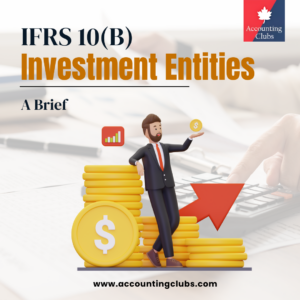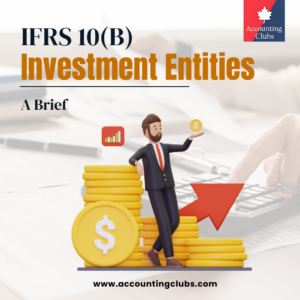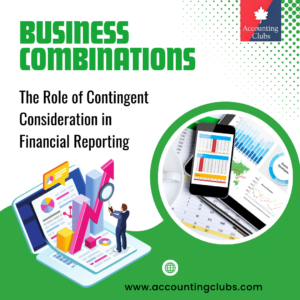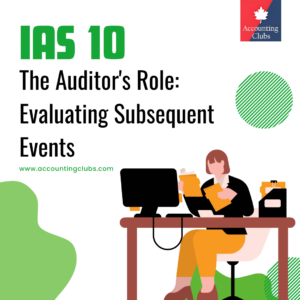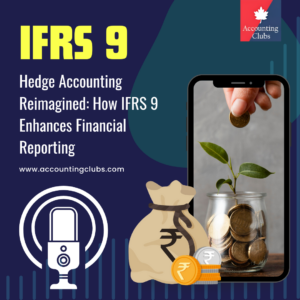Chapter 5: Use of Estimates
Preparing financial information at any cut-off date, even at the financial year end, involves making judgements and estimates. Such judgements are necessary because no accounting period can be entirely independent from those preceding or following it, and some items of income or expenditure will always be incomplete. However, at the end of the interim period, the preparation of the interim financial report will require a greater use of estimates than would be required at the year end. The application of measurement procedures in preparing an interim financial report should be designed to ensure that the information presented is both relevant to users’ understanding and sufficiently reliable.
Examples of the use of estimates for interim reporting purposes
Inventories: Full stock-taking and valuation procedures may not be required for inventories at interim dates, although it may be done at financial year end. It may be sufficient to make estimates at interim dates based on sales margins.
Classifications of current and non-current assets and liabilities: Entities may do a more thorough investigation for classifying assets and liabilities as current or non-current at the end of annual reporting periods than at interim dates.
Provisions: Determination of the appropriate amount of a provision (such as a provision for warranties, environmental costs, and site restoration costs) may be complex and often costly and time-consuming. Entities sometimes engage outside experts to assist in the annual calculations. Making similar estimates at interim dates often entails updating of the prior annual provision rather than the engaging of outside experts to do a new calculation.
Pensions: IAS 19 Employee Benefits requires an entity to determine the present value of defined benefit obligations and the fair value of plan assets at the end of each reporting period and encourages an entity to involve a professionally qualified actuary in measurement of the obligations. For interim reporting purposes, reliable measurement is often obtainable by extrapolation of the latest actuarial valuation.
Income taxes: Entities may calculate income tax expense and deferred income tax liability at annual dates by applying the tax rate for each individual jurisdiction to measures of income for each jurisdiction. IAS 34 acknowledges that while that degree of precision is desirable at the end of interim reporting periods as well, it may not be achievable in all cases, and a weighted average of rates across jurisdictions or across categories of income is used if it is a reasonable approximation of the effect of using more specific rates.
Contingencies: The measurement of contingencies may involve the opinions of legal experts or other advisers. Formal reports from independent experts are sometimes obtained with respect to contingencies. Such opinions about litigation, claims, assessments, and other contingencies and uncertainties may or may not also be needed at interim dates.
Revaluations and fair value accounting: IAS 16 Property, Plant and Equipment allows an entity to choose as its accounting policy the revaluation model whereby items of property, plant and equipment are revalued to fair value. Similarly, IAS 40 Investment Property requires an entity to measure the fair value of investment property. For those measurements, an entity may rely on professionally-qualified valuers at the end of annual reporting periods, though not at the end of interim reporting periods.
Intercompany reconciliations: Some intercompany balances that are reconciled on a detailed level in preparing consolidated financial statements at financial year end might be reconciled at a less detailed level in preparing consolidated financial statements at an interim date.
Specialised industries: Because of complexity, costliness and time, interim period measurements in specialised industries might be less precise than at financial year-end. An example would be calculation of insurance reserves by insurance companies.
The following examples are in addition to those given in IAS 34.
Financial instruments financial instruments that are carried at fair value should be remeasured at the interim date using the same methodology as at the end of the annual reporting period. Also, the carrying amount of financial instruments at amortised cost should be recalculated at the interim date.
Share-based payments Liabilities in respect of cash-settled share-based payments will generally be based on the fair value of the share options as at the end of the previous reporting period. If changes in the fair value of the share options since the most recent annual financial statements are material to the interim period, the fair value of the cash-settled share-based payments should be remeasured at the interim date.
In relation to equity-settled share-based payments, an entity should consider whether, at the interim date, there is any change in the number of equity instruments expected to vest. When the change could have a material impact on the interim period, the number of equity instruments expected to vest should be re-estimated at the interim date.
Non-current assets held for sale and discontinued operations
The measurement and presentation principles of IFRS 5 should be applied in interim financial reports in the same way as at the end of the annual reporting period. Therefore, a non-current asset that meets the criteria to be classified as held for sale at the interim date should be presented as such.
Similarly, an operation that meets the definition of a discontinued operation during the interim period should be presented as such in accordance with IFRS 5.
Changes in estimates
As an illustration of the impact of changes in estimates, IAS 34 considers the rules for recognising and measuring losses from inventory write-downs, restructurings or impairments. The principles to be followed in an interim period are the same as those for annual periods. If such items are recognised and measured in, say, the first quarter of a financial year and the estimate changes in the second quarter of the year, the original estimate is adjusted in the second interim period, either by recognition of an additional amount or by reversal of the previously-recognised amount.
If changes in estimates arise, the results of previous interim periods of the current year are not retrospectively adjusted. However, the nature and amount of any significant changes in estimates must be disclosed either:
- in the annual report, if there has been no subsequent interim period financial report that disclosed the change in estimate; or
- in the following interim period financial report of the same year.
IFRIC 10 gives guidance on circumstances in which an impairment loss should not be reversed.
Additional examples
IAS 34 contains a number of detailed examples to illustrate the application of the recognition and measurement principles discussed in the previous sections. These are reproduced in the following sections, together with a number of additional examples developed to illustrate important principles.
Employer payroll taxes and insurance contributions
If employer payroll taxes or contributions to government-sponsored insurance funds are assessed on an annual basis, the employer’s related expense is recognised in interim periods using an estimated average annual effective payroll tax or contribution rate, even though a large portion of the payments may be made early in the financial year. A common example is an employer payroll tax or insurance contribution that is imposed up to a certain maximum level of earnings per employee. For higher income employees, the maximum income is reached before the end of the financial year, and the employer makes no further payments through the end of the year.
Major planned periodic maintenance or overhaul
The cost of a planned major periodic maintenance or overhaul or other seasonal expenditure that is expected to occur late in the year is not anticipated for interim reporting purposes, unless an event has caused the entity to have a legal or constructive obligation. The mere intention or necessity to incur expenditure related to the future is not sufficient to give rise to an obligation.
Provisions
A provision is recognised when an entity has no realistic alternative but to make a transfer of economic benefits as a result of an event that has created a legal or constructive obligation. The amount of the obligation is adjusted upward or downward, with a corresponding loss or gain recognised in profit or loss, if the entity’s best estimate of the amount of the obligation changes.
Entities applying IFRIC 1 may need to adjust the carrying amount of the related asset instead of recognising adjustments in profit or loss.
IAS 34 requires that an entity should apply the same criteria for recognising and measuring a provision at an interim date as it would at the end of its financial year. The existence or non-existence of an obligation to transfer benefits is not a function of the length of the reporting period; it is a question of fact.
Year-end bonuses
The nature of year-end bonuses varies widely. Some are earned simply by continued employment during a time period. Some bonuses are earned based on a monthly, quarterly, or an annual measure of operating result. They may be purely discretionary, contractual, or based on years of historical precedent.
A bonus is anticipated for interim reporting purposes if, and only if:
- the bonus is a legal obligation, or past practice would make the bonus a constructive obligation and the entity has no realistic alternative but to make the payments; and
- a reliable estimate of the obligation can be made.
IAS 19 provides guidance on the application of the recognition rules to year-end bonuses.
Variable lease payments
Variable lease payments based on sales can be an example of a legal or constructive obligation that is recognised as a liability. If a lease provides for variable payments based on the lessee achieving a certain level of annual sales, an obligation can arise in the interim period of the financial year before the required annual level of sales has been achieved, if that required level of sales is expected to be achieved and the entity, therefore, has no realistic alternative but to make the future lease payment.
IAS 34 was amended in January 2016 by consequential amendments arising from IFRS 16. Under IFRS 16’s predecessor Standard, IAS 17, ‘variable’ lease payments were referred to as ‘contingent lease’ payments. The amendments to IAS 34 have not had any substantive effect.
Intangible assets
Entities are required to apply the definition and recognition criteria for an intangible asset in the same way in an interim period as in an annual period. Costs incurred before the recognition criteria for an intangible asset are met are recognised as an expense. Costs incurred after the specific point in time at which the criteria are met are recognised as part of the cost of an intangible asset. ‘Deferring’ costs as assets in an interim statement of financial position in the hope that the recognition criteria will be met later in the financial year is not justified.
Development costs that meet the IAS 38 capitalisation criteria part-way through an interim period – example An entity engaged in the pharmaceutical sector, with a December year end, reports quarterly. Throughout 20X2, its research department is engaged in a major drug development project. Development costs incurred in 20X2, by quarter, are as follows.
First quarter CU100 Second quarter CU100 Third quarter: 1 July to 31 August CU80 1 September to 30 September CU60 Fourth quarter CU150 The entity publishes its half-year report on 15 August, and the CU200 development costs incurred during the first and second quarters are recognised in profit or loss. On 1 September, the research department determines that the criteria set out in IAS 38 for recognising the development costs as an intangible asset have been met.
IAS 38 requires that asset recognition (cost capitalisation) should begin at the point in time at which the recognition criteria are met, not at the start of the financial reporting period in which those criteria are met. Therefore, the following amounts are reported in the interim financial reports for the second half of the financial year, and in the annual report at 31 December 20X2.
30 September 31 December CU CU Asset recognised in the statement of financial position 60 210 3 months ended 30 September 9 months ended 30 September 12 months ended 31 December CU CU CU Development costs recognised in profit or loss 80 280 280
Pensions
The pension cost for an interim period is calculated on a year-to-date basis by using the actuarially-determined pension cost rate at the end of the prior financial year, adjusted for significant market fluctuations since that time and for significant one-off events, such as plan amendments, curtailments and settlements.
Vacations, holidays and other short-term paid absences
Accumulating paid absences are those that are carried forward and can be used in future periods if the current period’s entitlement is not used in full. IAS 19 requires that an entity should measure the expected cost of and obligation for accumulating paid absences at the amount the entity expects to pay as a result of the unused entitlement that has accumulated at the end of the reporting period. That principle is also applied at the end of interim financial reporting periods. Conversely, an entity recognises no expense or liability for non-accumulating paid absences at the end of an interim reporting period, just as it recognises none at the end of an annual reporting period.
Accruing for holiday entitlements at interim reporting dates – example
An entity reports quarterly. Its financial year end is 31 December. Holiday entitlement accumulates with employment over the year, but any unused entitlement cannot be carried forward past 31 December. Most of the entity’s employees take a substantial portion of their annual leave in July or August.
A portion of employees’ salaries during the July/August holiday period should be accrued if the employees’ vacation days are earned (accumulated) through service during the first and second quarters. Such holiday entitlements are a form of short-term paid absence as defined in IAS 19; IAS 19 requires that the expected cost of short-term accumulating paid absences be recognised when the employees render service that increases their entitlement to future paid absences. This principle is applied at both annual and interim reporting dates.
Other planned but irregularly occurring costs
An entity’s budget may include costs expected to be incurred irregularly during the financial year, such as charitable contributions and employee-training costs. Those costs generally are discretionary, even though they are planned and tend to recur from year to year. Recognising an obligation at the end of an interim financial reporting period for such costs that have not yet been incurred generally is not consistent with the definition of a liability.
Measuring interim income tax expense
Use of estimated annual rate
The interim period income tax expense is accrued using the tax rate that would be applicable to expected total annual earnings, i.e., the estimated average annual effective income tax rate applied to the pre-tax income of the interim period.
This is consistent with the basic principle set out in IAS 34 that the same accounting recognition and measurement principles should be applied in an interim financial report as are applied in annual financial statements. Income taxes are assessed on an annual basis. Interim period income tax expense is calculated by applying to an interim period’s pre-tax income the tax rate that would be applicable to total annual earnings.
Consistent with IAS 12, the annual effective income tax rate should be estimated using the tax rates (and tax laws) that have been enacted or substantively enacted by the end of the interim period. Expected changes in tax rates or tax laws should not be anticipated and are reflected in the estimate of the annual effective income tax rate only once the change has been enacted or substantively enacted.
To the extent practicable, a separate estimated average annual effective income tax rate is determined for each tax jurisdiction and applied individually to the interim period pre-tax income of each jurisdiction. Similarly, if different income tax rates apply to different categories of income (such as capital gains or income earned in particular industries), to the extent practicable, a separate rate is applied to each individual category of interim period pre-tax income. While that degree of precision is desirable, it may not be achievable in all cases and a weighted average of rates across jurisdictions or across categories of income is used if it is a reasonable approximation of the effect of using more specific rates.
If the levels of income from some jurisdictions are much more or less than the ‘average’ income per jurisdiction, and/or the tax rate in a jurisdiction is significantly different from the standard tax rate, a weighted average of the rates across all jurisdictions is unlikely to be a reasonable approximation. In such circumstances, it may be possible to treat some jurisdictions individually and determine a weighted average for the other ‘average’ jurisdictions.
Difficulties in determining a reliably accurate forecast
Difficulties in producing accurate forecasts do not exempt an entity from applying the requirements of IAS 34. In particular, during uncertain times entities may have difficulty forecasting and/or may revise forecast profits for the year, as well as for the following years. Any changes in assumptions used to forecast pre-tax income will also need to be factored into an entity’s tax calculations; for example, the estimated annual effective tax rate and any tax benefit or expense resulting from the recognition (or de-recognition) of deferred tax assets which an entity includes in its forecast annual effective tax rate.
When income is forecast to decrease in later interim periods, the reduction in pre-tax profit might be accompanied by a similar reduction in forecast tax (e.g., if the entity has only insignificant non-taxable or non-deductible items that increase or decrease proportionately to ordinary income), resulting in only small changes to the estimated annual effective tax rate. However, if an entity’s non-taxable or non-deductible items are more significant and are not proportional to overall income, the entity’s annual effective tax rate might be highly sensitive to changes in estimated ordinary income for the year, rendering any estimate of an entity’s annual effective tax rate misleading. In such cases, entities should consider whether the non-deductible and non-taxable items should be considered as a separate income or expense stream when determining the income tax charge or included in the determination of interim income tax on a discrete basis.
Impact of progressive (graduated) tax rates
The estimated average annual effective income tax rate will reflect a blend of the progressive tax rate structure expected to be applicable to the full year’s earnings, including enacted or substantively enacted changes in the income tax rates scheduled to take effect later in the financial year. Example below, which is drawn from IAS 34, illustrates the impact of progressive tax rates.
Progressive tax rates
An entity reporting quarterly expects to earn 10,000 pre-tax each quarter and operates in a jurisdiction with a tax rate of 20 per cent on the first 20,000 of annual earnings and 30 per cent on all additional earnings. Actual earnings match expectations. The following table shows the amount of income tax expense that is reported in each quarter:
1st Quarter 2nd Quarter 3rd Quarter 4th Quarter Annual Tax expense 2,500 2,500 2,500 2,500 10,000
Uneven earnings throughout the year
Example below, drawn from IAS 34, illustrates the application of the IAS 34 principles when earnings are distributed unevenly throughout the year.
Uneven earnings throughout the year
An entity reports quarterly, earns 15,000 pre-tax profits in the first quarter but expects to incur losses of 5,000 in each of the three remaining quarters (thus having zero income for the year), and operates in a jurisdiction in which its estimated average annual income tax rate is expected to be 20 per cent. The following table shows the amount of income tax expense that is reported in each quarter:
1st Quarter 2nd Quarter 3rd Quarter 4th Quarter Annual Tax expense 3,000 (1,000) (1,000) (1,000) 0
Change in estimate of annual tax rate – example
The facts are the same as in above example. During the third quarter, the tax rate on annual earnings in excess of 20,000 increases from 30 per cent to 40 per cent. The tax rate on the first 20,000 of annual earnings remains at 20 per cent. Actual earnings match expectations. The following table shows the amount of income tax expense that is reported in each quarter.
1st Quarter 2nd Quarter 3rd Quarter 4th Quarter Annual CU CU CU CU CU Tax expense 2,500 2,500 4,000 3,000 12,000 Based on expected earnings of 10,000 pre-tax each quarter, the average annual income tax rate therefore increases from 25 per cent ((20,000 × 20 per cent + 20,000 × 30 per cent) / 40,000) to 30 per cent ((20,000 × 20 per cent + 20,000 × 40 per cent) / 40,000). The expense recognised in the third quarter is 4,000 ((30,000 × 30 per cent) less the tax expense of 5,000 already recognised in the first and second quarters).
Impact of change in estimate of annual tax rate
The guidance in IAS 34 is less clear on how to deal with a change in tax rate that has an effect on a deferred tax balance carried forward or arising during the interim period but which is not expected to be reversed until the next financial year. Two approaches are acceptable.
- Alternative 1 The guidance in IAS 34 could be read to mean that the effective tax rate is based on the total tax expense for the year, recognised rateably based on the income in the interim period. Because the total tax expense for the year includes movements in a deferred tax balance, this would mean that the effect of the change in a deferred tax balance as a result of a change in tax rate would be included in estimating the average annual income tax rate, consequently spreading the effect throughout the financial year.
- Alternative 2 IAS 34 could be read to require that the estimated average annual tax rate effectively represents the current tax rate for the current financial year, but excludes the impact of the changes on deferred tax balances expected to be recognised at the end of the financial year. Any change in existing deferred tax balances as a result of the change in tax rate would therefore be recognised in full in the period in which the change in tax rate occurs.
An entity should select one of these two approaches as its accounting policy and apply it consistently.
Impact of change in estimate of annual tax rate on deferred tax liability – example
Following on from previous example, assume that the entity recognised a deferred tax liability of 15,000 as at the beginning of the financial year. As a result of the change in tax rate from 30 per cent to 40 per cent, the deferred tax liability increases by 5,000 to 20,000. Under the alternative approaches described, this increase could be reflected either:
- by re-estimating the average annual income tax rate, thereby recognising the effect rateably in the third and fourth quarters on a year-to-date basis (Alternative 1); or
- by recognising the effect of the tax rate change on the deferred tax liability in full when the change in tax rate is enacted or substantively enacted (Alternative 2).
The following tables show the amounts of income tax expense reported in each quarter under the two alternatives.
Alternative 1
1st Quarter 2nd Quarter 3rd Quarter 4th Quarter Annual CU CU CU CU CU Tax expense 2,500 2,500 7,750 4,250 17,000 The tax rate on the first 20,000 of annual earnings remains at 20 per cent. Based on expected earnings of 10,000 pre-tax each quarter, the average annual income tax rate therefore increases from 25 per cent ((20,000 × 20 per cent + 20,000 × 30 per cent) / 40,000) to 42.5 per cent ((20,000 × 20 per cent + 20,000 × 40 per cent + 5,000) / 40,000). Therefore, the tax expense in the third quarter is 7,750 (42.5 per cent tax based on 30,000 pre-tax earnings to date, less the tax expense of 5,000 already recognised in the first and second quarters).
Alternative 2
1st Quarter 2nd Quarter 3rd Quarter 4th Quarter Annual CU CU CU CU CU Tax expense 2,500 2,500 9,000 3,000 17,000 The impact of the tax rate change on the deferred tax liability is recognised in full in the third quarter.
Based on expected earnings of 10,000 pre-tax each quarter, the average annual income tax rate (excluding the impact of the changes on deferred tax balances) therefore increases from 25 per cent ((20,000 × 20 per cent + 20,000 × 30 per cent) / 40,000) to 30 per cent ((20,000 × 20 per cent + 20,000 × 40 per cent) / 40,000). The expense recognised in the third quarter is 9,000 ((30,000 × 30 per cent) plus 5,000 increases in deferred tax liability less the tax expense of 5,000 already recognised in the first and second quarters).
Change in tax rate effective in the next financial year – example
An entity reports quarterly. It earns CU15,000 pre-tax in each of the first and second quarters and CU10,000 pre-tax in each of the third and fourth quarters. The tax rate applicable is 20 per cent. At the beginning of 20X1, the entity has a temporary difference of CU2,000 and recognised a related deferred tax liability of CU400 (CU2,000 × 20 per cent). CU500 of this temporary difference is expected to reverse in the fourth quarter of 20X1 and CU1,500 in 20X2. During the first quarter of 20X1, the tax rate increases from 20 per cent to 30 per cent, effective from 20X2. Assume that no other temporary differences arise throughout 20X1.
An effective tax rate of 20 per cent will apply to the temporary differences expected to reverse in 20X1 (i.e., CU500) and the increased rate of 30 per cent to those temporary differences expected to reverse in 20X2 (i.e., CU1,500). Consequently, the expected effect of remeasuring the opening deferred tax liability during 20X1 is CU150 ((CU1,500 × 30 per cent) – (CU1,500 × 20 per cent)).
Under the alternative approaches described, this increase would be reflected as follows.
- Alternative 1 The remeasurement of the deferred tax liability expected to be recognised during the financial year of CU150 is factored into the average annual income tax rate. This results in the remeasurement of CU150 being recognised rateably in each interim period. The entity would revise its average annual income tax rate to 20.3 per cent ((CU50,000 × 20 per cent + CU150) / CU50,000), recognise a tax expense of CU3,045 (CU15,000 × 20.3 per cent) and recognise the deferred tax liability at CU445 (CU400 + (CU150 × CU15,000 / CU50,000)) for the first quarter.
- Alternative 2 The remeasurement of the deferred tax liability expected to be recognised at the end of the financial year of CU150 is recognised in full in the first quarter. The entity therefore recognises tax of CU3,150 (CU15,000 × 20 per cent + CU150) and the deferred tax liability at CU550 in the first interim period.
Difference in financial reporting year and tax year
If the financial reporting year and the income tax year differ, the income tax expense for the interim periods of that financial reporting year is measured using separate weighted average estimated effective tax rates for each of the income tax years applied to the portion of pre-tax income earned in each of those income tax years.
Difference in financial reporting year and tax year
An entity’s financial reporting year ends 30 June and it reports quarterly. Its taxable year ends 31 December. For the financial year that begins 1 July, Year 1 and ends 30 June, Year 2, the entity earns 10,000 pre-tax each quarter. The estimated average annual income tax rate is 30 per cent in Year 1 and 40 per cent in Year 2.
Quarter ending 30 Sept Quarter ending 31 Dec Quarter ending 31 Mar Quarter ending 30 June Year ending 30 June Year 1 Year 1 Year 2 Year 2 Year 2 Tax expense 3,000 3,000 4,000 4,000 14,000
Tax credits
Some tax jurisdictions give taxpayers credits against the tax payable based on amounts of capital expenditure, exports, research and development expenditure, or other bases. Anticipated tax benefits of this type for the full year are generally reflected in computing the estimated annual effective income tax rate, because those credits are granted and calculated on an annual basis under most tax laws and regulations. On the other hand, tax benefits that relate to a one-time event are recognised in computing income tax expense in the interim period in which that event occurs, in the same way that special tax rates applicable to particular categories of income are not blended into a single effective annual tax rate. Moreover, in some jurisdictions, tax benefits or credits that are reported on the income tax return, including those related to capital expenditure and levels of exports, are more similar to a government grant and are recognised in the interim period in which they arise.
Recognising the tax effect of a significant one-off event occurring in an interim period – example Entity A is preparing its interim financial report for the first quarter of 20X1. During the period, Entity A acquired control of Entity B in which it had previously held an equity interest; in accordance with IFRS 3, Entity A remeasures its previously held interest in Entity B to fair value and the resultant gain is recognised in profit or loss.
The gain arising on the remeasurement is not taxable, i.e., the tax basis of the previously held shares in Entity B does not change and this results in a taxable temporary difference with respect to Entity A’s investment in Entity B. However, because (1) Entity A controls the timing of the reversal of the temporary difference, and (2) it is probable that the temporary difference will not reverse in the foreseeable future, in accordance with IAS 12 no deferred tax liability is recognised.
Excluding the effect of the acquisition of control of Entity B, Entity A’s pre-tax income for the first quarter of 20X1, and for the remainder of 20X1, are as follows.
1st quarter Estimated 2nd to 4th quarters Total estimated 20X1 CU CU CU Pre-tax income (excluding remeasurement gain) 5,500 22,000 27,500 Tax expense (effective tax rate of 35%, excluding the remeasurement gain) 1,925 7,700 9,625 Gain arising on remeasurement of previously held equity interest in Entity B) 3,500 Nil 3,500 IAS 34 does not specifically deal with the tax effect of significant one-off events occurring in an interim period. The requirements in IAS 34 apply in respect of the calculation of the tax expense for an interim period.
IAS 34 states explicitly that tax benefits that relate to significant one-off events arising from tax credits should be recognised in the interim period in which the event occurs. It is unclear whether the same approach should be applied in respect of one-off non-taxable events or one-off events that are taxable in a future period. However, it would seem appropriate to apply the same principle in similar circumstances. If this approach were taken in the circumstances under consideration, the effect of the remeasurement gain on the effective tax rate would be recognised in full in Quarter 1 (Alternative 1).
Alternatively, in the absence of a specific requirement, Entity A may consider that it is preferable to apply a constant tax rate throughout the year. If this approach were taken in the circumstances under consideration, the effect of the remeasurement gain on the effective tax rate would be recognised evenly over the annual period (Alternative 2).
Alternative 1 — tax effect of remeasurement gain recognised in full in the interim period in which it occurs
1st quarter Estimated 2nd to 4th quarters Total estimated 20X1 CU CU CU Pre-tax income (excluding remeasurement gain) 5,500 22,000 27,500 Gain arising on remeasurement of previously held equity interest in Entity B 3,500 Nil 3,500 Total pre-tax income 9,000 22,000 31,000 Tax expense 1,925 7,700 9,625 Effective tax rate 21% 35% 31% Alternative 2 — tax effect of remeasurement gain is spread over the annual period
1st quarter Estimated 2nd to 4th quarters Total estimated 20X1 CU CU CU Pre-tax income (excluding remeasurement gain) 5,500 22,000 27,500 Gain arising on remeasurement of previously held equity interest in
Entity B
3,500 Nil 3,500 Total pre-tax income 9,000 22,000 31,000 Tax expense (at the revised effective income tax rate of 31%) 2,794 6,634 9,625 Effective tax rate 31% 31% 31% Whichever approach is adopted, Entity A should apply it consistently as an accounting policy choice.
Impact of changes in estimates of prior year tax
Tax in previous years may have been under-provided or over-provided, resulting in a correcting tax charge or credit in the current year. The related tax charge or credit relates to prior year profits rather than current year earnings. Therefore, the correcting tax charge or credit should be treated as a one-off event and recognised in the interim period in which it becomes probable that such a correction is required. It should not be reflected in the average annual income tax rate.
Tax loss and tax credit carry backs and carry forwards
The benefits of a tax loss carry back are reflected in the interim period in which the related tax loss occurs. IAS 12 requires that “the benefit relating to a tax loss that can be carried back to recover current tax of a previous period should be recognised as an asset”. A corresponding reduction of tax expense or increase of tax income is also recognised.
IAS 12 also requires that “a deferred tax asset should be recognised for the carry forward of unused tax losses and unused tax credits to the extent that it is probable that future taxable profit will be available against which the unused tax losses and unused tax credits can be utilised”. Detailed criteria are specified for the purpose of assessing the availability of future taxable profit against which the unused tax losses and credits can be utilised.
For interim reporting purposes, the criteria for recognition of deferred tax assets are applied at the end of each interim period and, if they are met, the effect of the tax loss carry forward is reflected in the computation of the estimated average annual effective income tax rate.
Tax loss carryforward at the beginning of the current financial year
An entity that reports quarterly, has an operating loss carryforward of 10,000 for income tax purposes at the start of the current financial year for which a deferred tax asset has not been recognised. The entity earns 10,000 in the first quarter of the current year and expects to earn 10,000 in each of the three remaining quarters. Excluding the carryforward, the estimated average annual income tax rate is expected to be 40 per cent. Tax expense is as follows:
1st Quarter 2nd Quarter 3rd Quarter 4th Quarter Annual Tax expense 3,000 3,000 3,000 3,000 12,000
Recognition of the tax benefit of losses in an interim period
The tax effect of losses that arise in the early portion of a financial year should be recognised only when the tax benefits are expected to be realised either during the current year or as a deferred tax asset at the end of the year. For the purpose of applying this guidance, an established seasonal pattern of losses in the early interim periods followed by profits in later interim periods is generally sufficient to support a conclusion that realisation of the tax benefit from the early losses is probable. Recognition of the tax benefit of losses incurred in early interim periods will generally not occur in those interim periods if available evidence indicates that profits are not expected in later interim periods or subsequent financial years.
If the tax benefits of losses that are incurred in the early interim periods of a financial year are not recognised in those interim periods, no income tax expense will be recognised in respect of profits generated in later interim periods until the tax effects of the previous losses are offset.
The tax effect of a deferred tax asset expected to be recognised at the end of a financial year for deductible temporary differences and carryforwards that originate during the current financial year should be spread throughout the financial year by an adjustment to the annual effective tax rate.
For example, assume that during the first quarter of 20X1, an entity, operating in a tax jurisdiction with a 50 per cent tax rate, generates a tax credit of CU4,000 (i.e. sufficient to cover taxable profits of CU8,000). Under local tax law, the tax credit will expire at the end of 20X2. At the end of the first quarter of 20X1, available evidence about the future indicates that taxable income of CU2,000 and CU4,000 will be generated during 20X1 and 20X2, respectively. Therefore, the entity expects to utilise CU1,000 (CU2,000 × 50 per cent) of the tax credit to offset tax on its 20X1 taxable income, and CU2,000 (CU4,000 × 50 per cent) to offset tax on its 20X2 income. It expects to recognise a deferred tax asset in its statement of financial position at the end of 20X1 of CU2,000 (relating to the tax relief available in 20X2), and the balance of CU1,000 will not be recognised because it is not probable that sufficient taxable profit will be available against which it can be utilised before the losses expire.
The CU1,000 of the tax credit expected to be utilised during the current year (20X1) is included in calculating the estimated annual effective tax rate.
Because the tax credit is generated during the current year, the tax consequence of the CU2,000 deferred tax asset expected to be recognised at the end of 20X1 is applied rateably to each of the interim periods during 20X1.
Therefore, if profits arise on a straight line basis through 20X1, a benefit for income taxes of CU500 (CU2,000 × 1/4) will be recognised during the first interim period. Assuming the estimates about the future do not change during the remainder of the year, the tax benefit of the remaining CU1,500 (CU2,000 – CU500) of net deferred tax asset will be recognised rateably over the pre-tax accounting income generated in the later interim periods of 20X1.
Change in estimate as to the recoverability of a tax loss carryforward
It is not clear whether IAS 34 applies equally to all circumstances when a previously recognised deferred tax asset is no longer expected to be recoverable. There appear to be two acceptable approaches.
- Alternative A Derecognise at the interim reporting date all the amounts assessed as not recoverable.
- Alternative B Spread the derecognition via the estimated annual effective tax rate.
Whichever approach is selected, it should be applied consistently as an accounting policy choice.
For example, an entity operates in a tax jurisdiction with a 50 per cent tax rate. In 20X1, the entity incurs tax losses of CU50,000, which can be carried forward to offset against future taxable profits until 20X3. At 31 December 20X1, the entity estimates that CU40,000 of the losses can be recovered against profits in 20X2 (budgeted profit CU15,000) and 20X3 (budgeted profit CU25,000), and therefore recognises a deferred tax asset of CU20,000 (CU40,000 × 50 per cent) in its annual financial statements for 20X1.
At the end of the first quarter of 20X2, actual year-to-date profits and expectations for the remainder of the year are in line with budget. However, the budgeted profit for 20X3 is revised downward to CU20,000.
Under the alternative approaches, the following amounts will be recognised.
Alternative A
If the derecognition of the deferred tax asset is accounted for entirely at the date at which it is assessed as not recoverable, at the end of the first quarter of 20X2 the carrying amount of the deferred tax asset should be reduced by CU2,500 (CU5,000 at 50 per cent). Therefore, in quarter 1 of 20X2, assuming taxable profits of CU6,000 and an estimated effective annual rate of 50 per cent, the income tax expense for the quarter is estimated as follows.
Tax expense in quarter 1: (CU6,000 × 50%) + CU2,500 = CU5,500 Deferred tax asset carrying amount at the end of quarter 1 (original carrying amount of CU20,000 less CU3,000 utilised in the quarter less write-off of CU2,500) CU14,500 Alternative B
If the effect of the derecognition of the deferred tax asset is spread throughout the year as part of the computation of the annual effective tax rate, the carrying amount of the deferred tax asset should be reduced by CU2,500 (CU5,000 at 50 per cent) only at the end of 20X2. Therefore, in quarter 1 of 20X2, assuming taxable profits of CU6,000 out of estimated annual profits of CU15,000, the income tax expense for the quarter is estimated as follows.
Estimated effective annual tax rate: [(CU15,000 × 50%) + CU2,500] / CU15,000 = 66.7% Tax expense in quarter 1: CU6,000 × 66.7% = CU4,000 Deferred tax asset carrying amount at the end of quarter 1 (original carrying amount of CU20,000 less CU3,000 utilised in the quarter less write-off of CU1,000) CU16,000 The remaining write-down of CU1,500 will be recognised over the remainder of the year through the mechanism of the effective tax rate.

